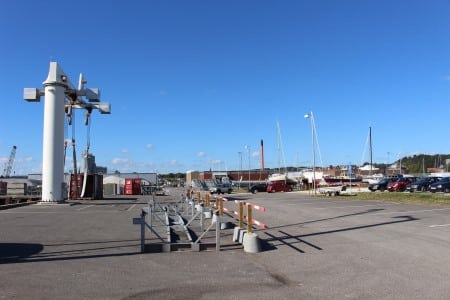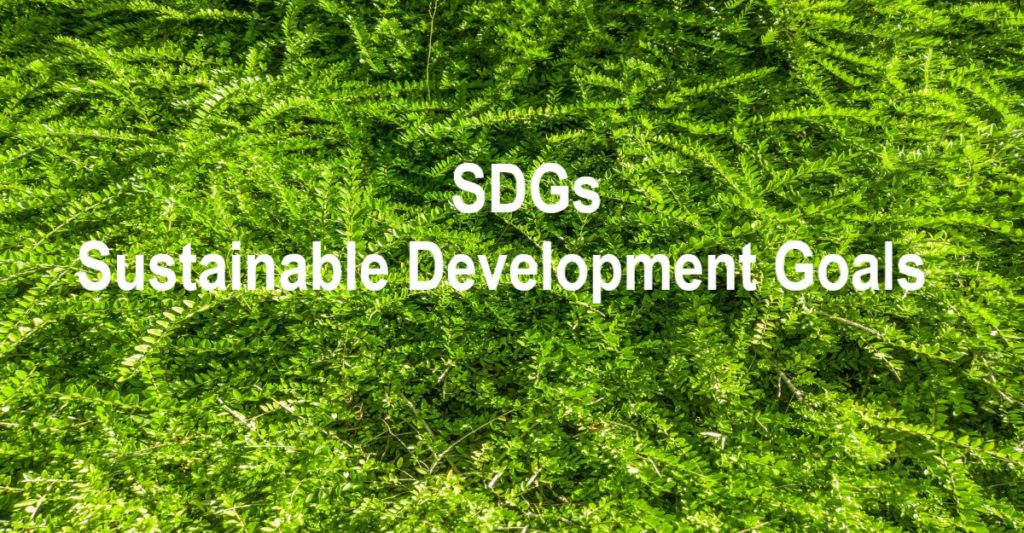During the two months from October to December, we held a series of four free web seminars on “Idle Assets: Effective Utilization of Closed School Sites. In recent years, due to the decline in the number of students caused by the declining birthrate and municipal mergers, about 500 public schools have been closed every year, as you may already know.
It is a great loss to the community and a negative impact on the safety and environment of the community when schools, which are supposed to be valuable assets and symbols of the community, are left idle because there is no clear way for them to be reused in the community. Against this background, finding new uses for closed school buildings is one of the projects that the public and private sectors should work together on. The important point here is whether the approach and strategy are formulated based on the promotion of the SDGs. The SDGs, which were adopted at the UN General Assembly held at UN Headquarters in New York in September 2015 as actions that are extremely important for humanity and the future, can now be said to be the basis for all value creation.
In this article, we would like to explore the key words for utilizing idle assets through examples of SDGs strategies from around the world.
■What are SDGs?
In September 2015, a text named “Transforming Our World: The 2030 Agenda for Sustainable Development/Transforming Our World: The 2030 Agenda for Sustainable Development” was adopted by the UN General Assembly. This is the text that describes the sustainable development goals used in the name of SDGs (Sustainable Development Goals). Based on the principle of “leave no one behind,” 17 goals and 169 targets have been set for 2030. At the beginning of the text, there are five key words that state that the future after 2030 can be seen by intertwining all aspects of “people, planet, prosperity, peace, and partnership.
Five keywords ➡ https://www.unicef.or.jp/kodomo/sdgs/preamble/
The 17 goals ➡ https://www.unicef.or.jp/kodomo/sdgs/17goals/
■Thinking about the SDGs from the perspective of idle assets
#1. Local development x SDGs
As we consider the goal of the SDGs – a world, society, and local communities that develop sustainably – there is a growing concern about the rapid depopulation of Japan’s local communities, especially in rural and mountainous areas. The decline of local industries and the deterioration of the living environment will accelerate the decline of the population, which will eventually lead to the decline of local communities and the threat of the disappearance of settlements. Now that it has become clear that it is no longer possible for local governments to provide the kind of services to residents that they have in the past, based on the premise of population growth, there is a need to establish a new model for maintaining local communities and building sustainable communities by optimally utilizing limited human and material resources. This is the time to establish optimal use of our limited human and material resources for maintaining local communities and building sustainable communities.
In May 2014, the Japan Creation Council (chaired by Hiroya Masuda) released a report that more than half (896) of the 1,800 municipalities in Japan could “disappear” by 2040, causing a huge shock. In response, in September of the same year, the government established the Headquarters for the Creation of New Town, New Human Resources, and New Work, and began full-scale efforts to create new regions. Since then, several policies have been put forward to actively utilize the SDGs in regional development.
#2. Social, Economic, and Environment x SDGs
The SDGs are about viewing “economy,” “society,” and “environment” as inseparable, and using the issues faced by each of them as inputs to create new value while solving them.
We believe that the concept of “design thinking,” which architectural design firms like ours are best at, will come into play. Design Thinking is not only used in the design process, but also in the management and business development of global companies such as Apple, Google, P&G, etc. In recent years, Japanese companies have also become more interested in this way of thinking due to changes in the market structure. It is composed of five major processes.
- Empathize
- Define
- Ideate
- Prototype
- Test
The process of creating new products and services through repeated trial and error and testing with actual customers and users is a process in which stakeholders, such as companies and organizations like ours, gather information on issues from local residents and governments, define issues and needs, come up with ideas, create prototypes based on those ideas, and test them on actual customers and users. Design Thinking is characterized by its ability to think from the standpoint of the users of the product or service, and to seek fundamental solutions, rather than simply solving problems and issues that have surfaced.
From these points of view, we can say that “sustainability,” which is the basis of the SDGs, is a good match for “utilization of idle assets.
■SDGs around the world
In the world, there are many SDG achievements with resilience and coexistence as keywords. It can be said to be a picture of individuals, communities, organizations, businesses, and social systems achieving sustainable growth while adapting to social challenges, and to address the issue of how to create a common identity and emotional attachment for local residents with different backgrounds. We have been working with not only local residents but also other stakeholders such as corporations, NGOs, universities, and the third sector under the concept of “collaboration and co-creation”.Here, we would like to introduce the case of Veile, Denmark as one example amongst the SDGs in the world.
Veile(Denmark)


Veile is located in the southern part of the Jutland Peninsula, bordering Germany on the continental side of Europe. It is the only city in Scandinavia to be selected as one of the 100 Resilient Cities (100RC). 100RC is a project initiated by the Rockefeller Foundation in the United States in 2013. The foundation selects 100 cities from around the world, and with the support of the foundation, formulates a resilience strategy and builds an international network. Kyoto City and Toyama City were selected from Japan.
Back in Veile, in 2016, the strategy was formulated under the slogan “A sustainable city for all”. In particular, it focuses on three areas: citizen participation, digitalization, and building social resilience. In recent years, the city has become a source of economic growth and innovation with the emergence of many IT companies and start-ups. In 2012, it was awarded as the city with the most advanced social integration with refugees in Denmark.
There are five major challenges facing Veile.
① Climate change and flood risk (many floods and unexpected heavy rains have occurred in recent years)
② Urbanization (impact on the natural environment due to increased traffic)
③ Increased needs for infrastructure (IT to support digital life, aging of existing infrastructure)
④ Changes in industrial structure, global economy (impact on local employment)
⑤ Demographic change (weakening of social bonds)
The following four strategies were identified as approaches to the problem.
❶A city where co-creation is born
❸ A city that is flexible to climate change
❸ Socially resilient cities
❹ Smart city
“Co-creation” is what Veile is focusing on the most as “citizen engagement and co-creation”. Specifically, Veile has set up a welfare laboratory to support citizens with disabilities living in the facilities by holding art festivals with experts in various fields. In addition, an expo is scheduled to be completed in 2040 to display the challenges Vaile is facing and how to solve them, and a living laboratory is being developed to implement solutions in collaboration with various Stakeholders.
Next is “climate change”. Water has always been a symbol of the city and a part of life, as evidenced by the fact that the name Veile is derived from the word meaning “fjord” and that people settled in the valley of a tributary of the Vaile River in the 12th century. However, due to recent climate change, it is estimated that the fjord facing the city will rise by 25 cm by 2050 and 69 cm by 2100. The water, which is a symbol for Veile, has become a source of disaster risk. In order to minimize the risk of flooding, plans are underway to redevelop the waterfront area facing the fjord and to install water level control equipment. We are also making efforts to promote the use of bicycles. The use of bicycles reduces CO2 in the atmosphere, improves the health and wellbeing of citizens, and reduces the social cost of gasoline-run vehicles. Plans are also underway to build a bike path in the center of the city.
Lastly, “Resilient and Smart Cities”, in other words, aims to ensure the safety and security of the city while integrating with the ever-increasing number of immigrants, strengthen the connection between the younger generation and society, and create shareable resources with the public and private sectors.
For example, a citizen’s farm program called “Grow Veile” provides citizens who do not have a garden with the opportunity to rent a field and grow organic crops with less environmental impact, and the city’s police, schools, nurses, businessmen, and counselors work together to develop programs and tools to combat crime and identify suspicious people. A variety of initiatives are being planned and implemented to help new and old citizens develop an identity with the city and strengthen their ties to society.
At Veile, people with different expertise from the private sector, government, research institutions, and the third sector gather to realize co-creation, and think and develop new ideas and services to address the issues. From this, we can see how they are not just developing solutions, but also approaching and interacting with local residents.
The various approaches promoted by Denmark and Veile, including the creation of a “public-private collaboration space” in the form of a living laboratory, can be said to be very helpful for the utilization of idle assets.
Sources:
https://www.hanmoto.com/bd/isbn/9784761527839
https://www.mofa.go.jp/mofaj/gaiko/oda/sdgs/about/index.html
https://www.unicef.or.jp/kodomo/sdgs/17goals/

